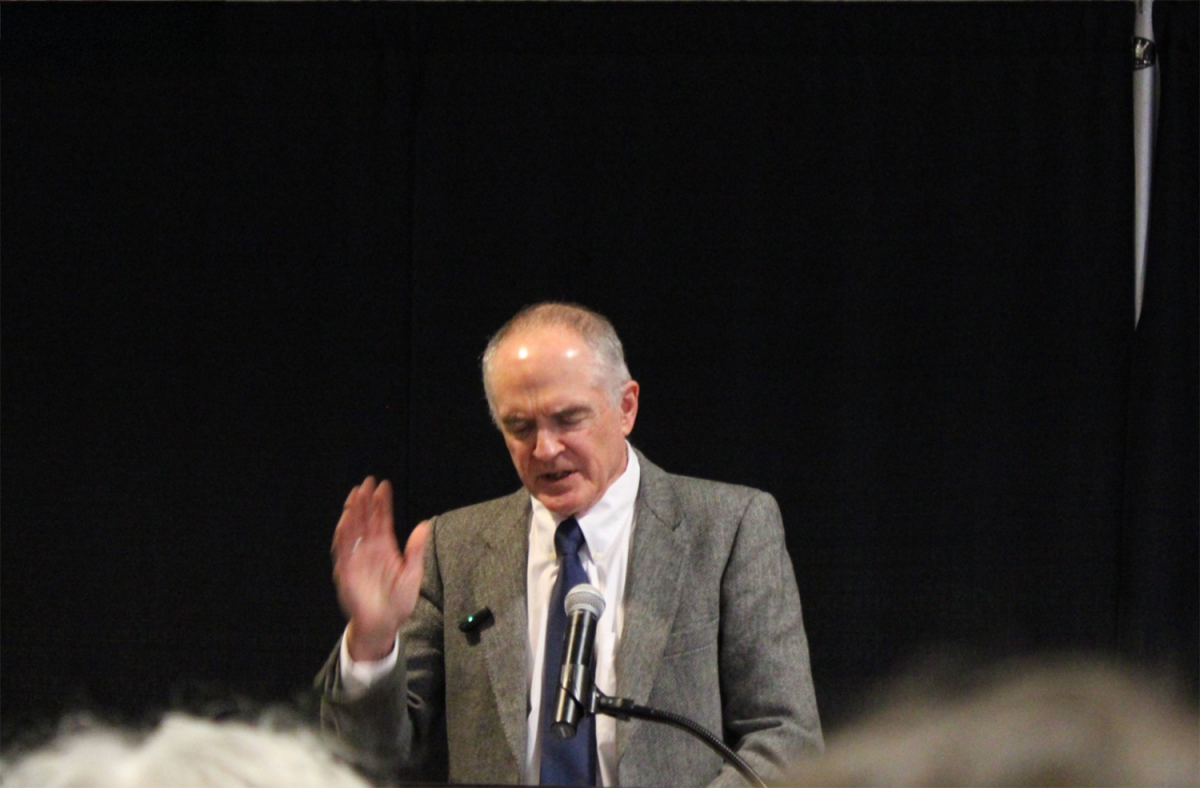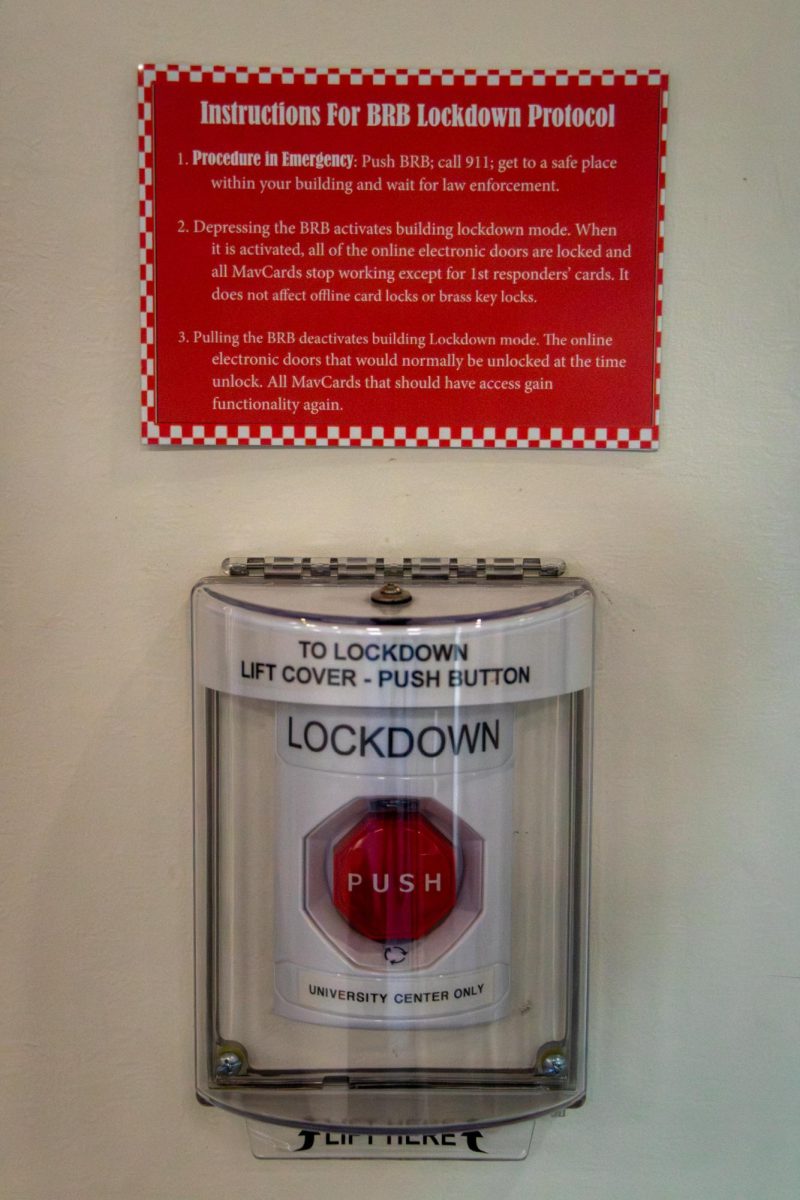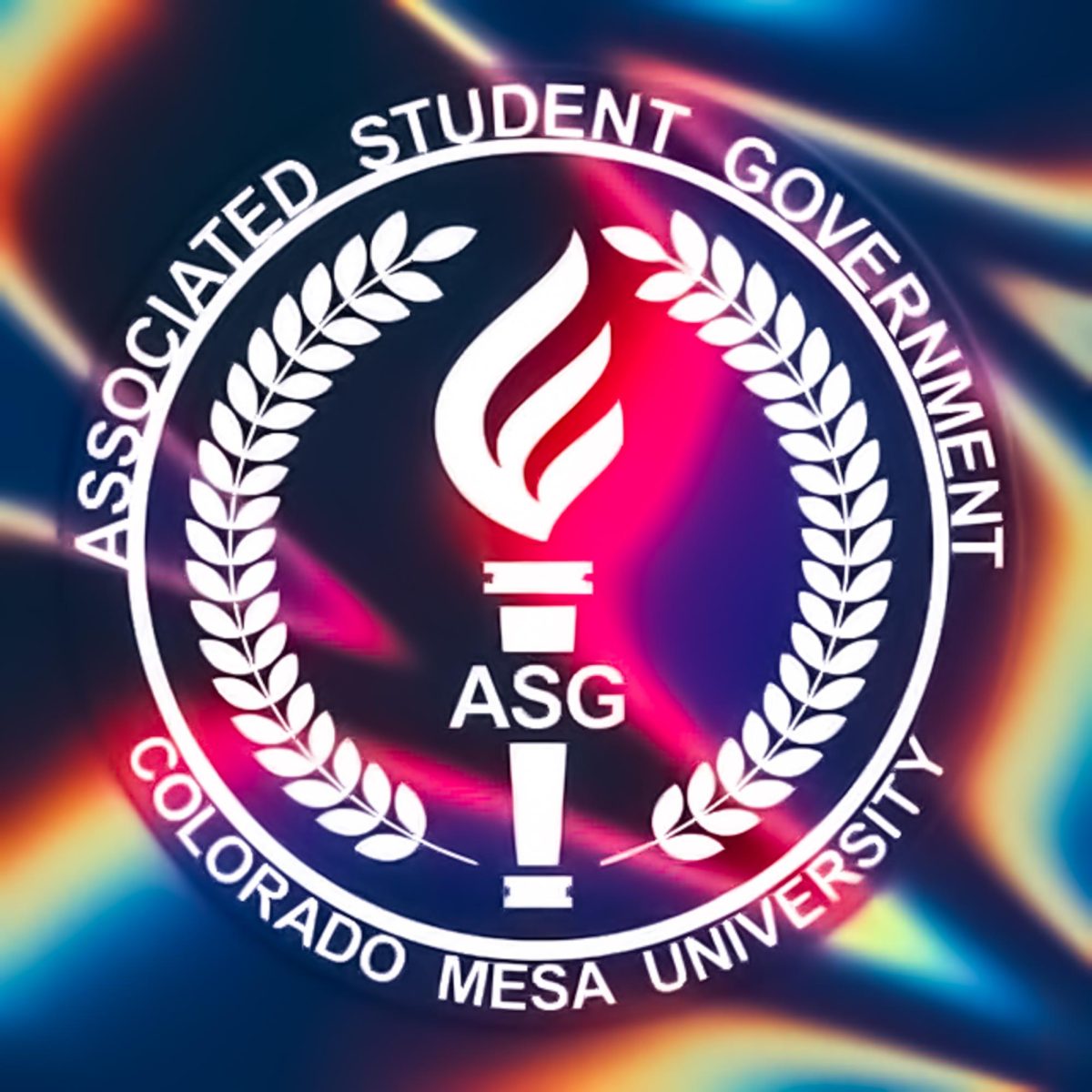Jared Taylor presented his pro-segregation speech “Divorce Papers for a Divided Nation” on Thursday, March 27.
A member of campus personnel started the event by informing attendees that disruptions would be cause for removal from the room.
After a brief introduction by Western Culture Club president Maxwell Applebaugh, the student who initially invited Taylor to campus, Taylor began his speech by recounting comments and concerns about his presence on campus.
He remarked that he had “watched with some amusement” the reactions of students and even faculty members who protested his arrival on campus as a threat to the safety of the community.
Taylor called out university President John Marshall, who he saw as avoiding a difficult conversation by refusing his request to speak after the event and dismantle his ideas.
Expressing doubt at the idea that his rhetoric was harmful to racial minorities on campus, he disparaged emails sent to both Marshall and himself. In particular, he responded to an email to Marshall from Visiting Instructor of English Megan Riddle.
“I jeopardize the safety of racially vulnerable students. How on earth do I do that?” Taylor asked. “Are white people going to listen to my talk and then go out and get up lynch mobs?”
Community members who disagreed with his ideals, he said, should listen to what he has to say in order to confront them.
“Thinking that you are someone’s moral superior makes your brain] pumping out dopamine just like a junkie with a needle in his arm,” said Taylor, citing no evidence based sources.
According to Taylor, all of the criticism that his presence on campus received was sheerly out of a desire to feel morally superior.
He posed the question as to why racially and culturally based student alliances existed on a campus that is meant to represent an ideal world, sarcastically mis-characterizing these alliances as groups which had “prepared to defend against attack”.
The existence of these student organizations, he said, was “official recognition of the fact that […] people like being around people like themselves–people of the same race.”
Notably, the missions of the Asian Student Alliance, Black Student Alliance, Ho-olokahi Polynesian Alliance and Native American Student Association, which he all mentioned by name, express desires for education and promotion of their cultures within the larger campus community.
Moving on to discuss historical racism in the United States, Taylor mentioned that many early presidents owned slaves and expressed “far harsher” viewpoints on other races than “anything he would say.”
He then went on to argue that because, in his view, white supremacy is about domination of other cultures, he would not consider himself a white supremacist.
Taylor said the idea that racial diversity is a strength “didn’t show up until the end of the 20th century.” He often referred to “diversity” throughout his speech as a shorthand for racial diversity, with minimal mention of other forms of identity.
Describing racial diversity as a source of “conflict and dissension,” he implied that racial discrimination and its negative effects are purely caused by racial mixing.
He mentioned interracial violence between prison gangs, as well as mostly racially homogenous church populations as examples that people want to be grouped with their own race.
Taylor critiqued what he viewed as hypocrisy from hypothetical white people who don’t “float their lives with this rainbow diversity” in choosing neighborhoods, schools for their children or social groups but praise its value.
Taylor criticized author Ta-Nehisi Coates, Atlantic journalist Jemele Hill and as well as similarly public Black figures for comments such as those about the “demon religion of white supremacy,” and “white men [being] the worst” respectively.
“White people have poured more energy into being scrupulously fair […] to racial minorities than any group of people in the entire history of the world,” claimed Taylor.
He then criticized an idealistic future vision of race relations where people of different races intermarry until they are no longer distinguishable from one another.
“Widespread inter-racial relationships are] the only solution! No. No. That plan means extinction, certainly for my people […] This mixing undertaking means white people disappear,” Taylor said.
Taylor finished the speech by proposing that to maintain the character of respective racial and ethnic groups, they should all be segregated and isolated from one another.
“I believe that this wonderful diversity of human being can be preserved only when each group has its own territory […] I believe that this wonderful diversity of human beings can be reserved only when each group has its own territory […] where it is the exclusive proprietor […] This is my dream for all races,” said Taylor.
In the Q&A that followed the speech, an audience member called out what they viewed as Taylor’s outdated references to the founding fathers.
“Why are you thinking that people who lived 200 years ago being racist […] makes it okay for you to be racist?” they asked.
Taylor responded that he didn’t agree with the definition of “what [the audience member considers as racism.”
Dean Withers, an online political commentator who grew up in Grand Junction and attended the speech, commented on the prospect of racial change and acceptance.
“You call the [protest] outside of this building with 500 people something that you’ve seen for your first time […] that demonstrates [that] we are changing and the only people holding us back are individuals like you,” said Withers.
Taylor rebutted by asking why many Black Americans still felt racial issues were unsolvable in the United States after hundreds of years according to a poll he cited earlier in the speech.
He attempted to answer a question from another audience member, but Withers persisted, rising from his seat.
“Why are these issues still persisting after five hundred years? How long did people think the Earth was flat? How long […] did we leave child marriage legal? Sometimes it does take time to overcome issues,” said Withers.
A university staff member, who had given a briefing on disruptions at the beginning of the speech, addressed Withers, saying, “you’re going to sit down and you’re going to be respectful or you’re going to leave.”
He sat down and the microphone was passed to another audience member.
Mayor of Palisade and CMU Instructor of Mass Communication Greg Mikolai, pointed out what he saw as a logistical flaw in Taylor’s argument.
“I’m understanding that you’re kind of advocating for resegregation […] Blacks here, Hispanics here, whites here,” said Mikolai. “Where are they gonna go?”
“There’s plenty of room in the United States. Where there’s a will, there’s a way,” said Taylor
Mikolai responded, joking about the idea that it would be feasible to carve the country into geographical pieces and force people to move.
Taylor clarified that he rather was advocating for “voluntary separation on a small scale […] There is nothing wrong with people wishing to separate.”
Another audience member asked what Taylor believed the benefits of segregation would be in a modern day America.
“I [just wanted people] to leave off this idea of trying to build a society in which race can be essentially obliterated.”








